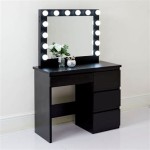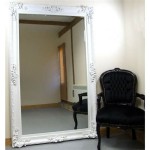How to Make Glass into a Mirror
Creating a mirror from a piece of glass involves depositing a thin, reflective layer onto the glass surface. This process, known as silvering, utilizes chemical reactions to apply a metallic coating, typically silver, though other metals like aluminum or chromium can be used. This article explores several methods for silvering glass, detailing the necessary materials, procedures, and safety precautions.
Silvering with Silver Nitrate: This traditional method employs silver nitrate as the source of silver ions. It requires precise measurements and careful execution to achieve a uniform and reflective coating.
Materials: Distilled water, silver nitrate, ammonium hydroxide (25% solution), potassium sodium tartrate, nitric acid (optional, for cleaning), protective gloves, safety goggles, clean glass sheet, beakers or other non-reactive containers.
Procedure: The process begins by preparing two separate solutions. Solution A consists of dissolving silver nitrate in distilled water. Solution B involves dissolving potassium sodium tartrate in distilled water. Ammonium hydroxide is added dropwise to Solution A until the initially formed precipitate dissolves, creating a clear solution. This process is repeated with Solution B. The glass, thoroughly cleaned with nitric acid and rinsed with distilled water, is placed in a clean container. Solutions A and B are then combined and poured over the glass, ensuring it is completely submerged. The container is left undisturbed for approximately 45 minutes, during which the silver ions are reduced and deposited onto the glass surface, forming a reflective layer. After the allotted time, the glass is carefully removed, rinsed with distilled water, and allowed to dry completely. A protective backing, such as paint or another sealant, can then be applied to protect the silver layer from oxidation and damage.
Silvering with Tollen's Reagent: This method utilizes Tollen's reagent, a solution of silver nitrate, ammonia, and sodium hydroxide. It offers a relatively simple and effective way to create a mirror.
Materials: Silver nitrate, sodium hydroxide, ammonium hydroxide, distilled water, clean glass sheet, beaker or other non-reactive container, protective gloves, safety goggles.
Procedure: Tollen's reagent is prepared by adding sodium hydroxide to a silver nitrate solution until a brown precipitate forms. Ammonium hydroxide is then added dropwise until the precipitate dissolves, forming a clear solution. The cleaned glass sheet is placed in the container and the Tollen's reagent is poured over it. A reducing sugar, such as glucose or dextrose, is then added to the solution. This initiates the reduction of silver ions, resulting in a silver layer depositing onto the glass surface. The glass is left undisturbed for a sufficient time to allow for complete coating, then carefully removed, rinsed, and dried. A protective backing can be applied to enhance durability.
Silvering with Tin Chloride (Stannous Chloride): This less common method utilizes stannous chloride to reduce silver ions onto the glass surface. It offers an alternative to the silver nitrate methods.
Materials: Stannous chloride, silver nitrate, distilled water, clean glass sheet, spray bottle, protective gloves, safety goggles.
Procedure: Separate solutions of stannous chloride and silver nitrate are prepared in distilled water. The glass surface is thoroughly cleaned. The stannous chloride solution is sprayed onto the clean glass surface, creating a sensitized layer. Immediately after, the silver nitrate solution is sprayed onto the sensitized glass. The stannous chloride reduces the silver ions, depositing metallic silver onto the glass. The glass is then rinsed and dried, and a protective backing is applied.
Safety Precautions: Silver nitrate can stain skin and clothing. Ammonium hydroxide and sodium hydroxide are corrosive and should be handled with extreme care. Nitric acid is also corrosive. Always wear appropriate personal protective equipment, including gloves and goggles, when working with these chemicals. Perform these procedures in a well-ventilated area to avoid inhaling fumes. Properly dispose of chemical waste according to local regulations.
Factors Affecting Mirror Quality: Several factors influence the quality of the mirrored surface. Cleanliness of the glass is crucial. Any dust, grease, or other contaminants can interfere with the even deposition of the silver layer. The concentration and temperature of the solutions also play a role. Maintaining the correct proportions and temperatures is essential for optimal results. The duration of the silvering process affects the thickness and reflectivity of the coating. Finally, the application of a protective backing is critical for preventing oxidation and maintaining the mirror's reflective properties over time.
Alternative Silvering Methods: While the methods described above are commonly used, other techniques exist for silvering glass. Vacuum deposition, a process commonly used in industrial settings, involves vaporizing aluminum or other metals in a vacuum chamber and allowing them to condense onto the glass surface. This method produces highly uniform and durable coatings. Chemical vapor deposition involves reacting gaseous precursors on the glass surface to deposit a thin film. This method is suitable for creating specialized coatings with specific properties.

How To Turn Ordinary Glass Into An Antique Mirror

How To Make A Mirror With Pictures Wikihow

How To Make A Mirror With Pictures Wikihow

How To Turn Ordinary Glass Into An Antique Mirror

How To Make A Mirror With Pictures Wikihow

How To Make A Mirror With Pictures Wikihow

Easy Ways To Make A One Sided Mirror With Pictures Wikihow

How To Quickly Turn Glass Mirror In 4 Steps Spray Paint Home Decor Ideas

How To Turn Ordinary Glass Into Looking Interior Frugalista

How To Turn A Thrifted Picture Frame Into Mirror Sweet Southern Oaks








